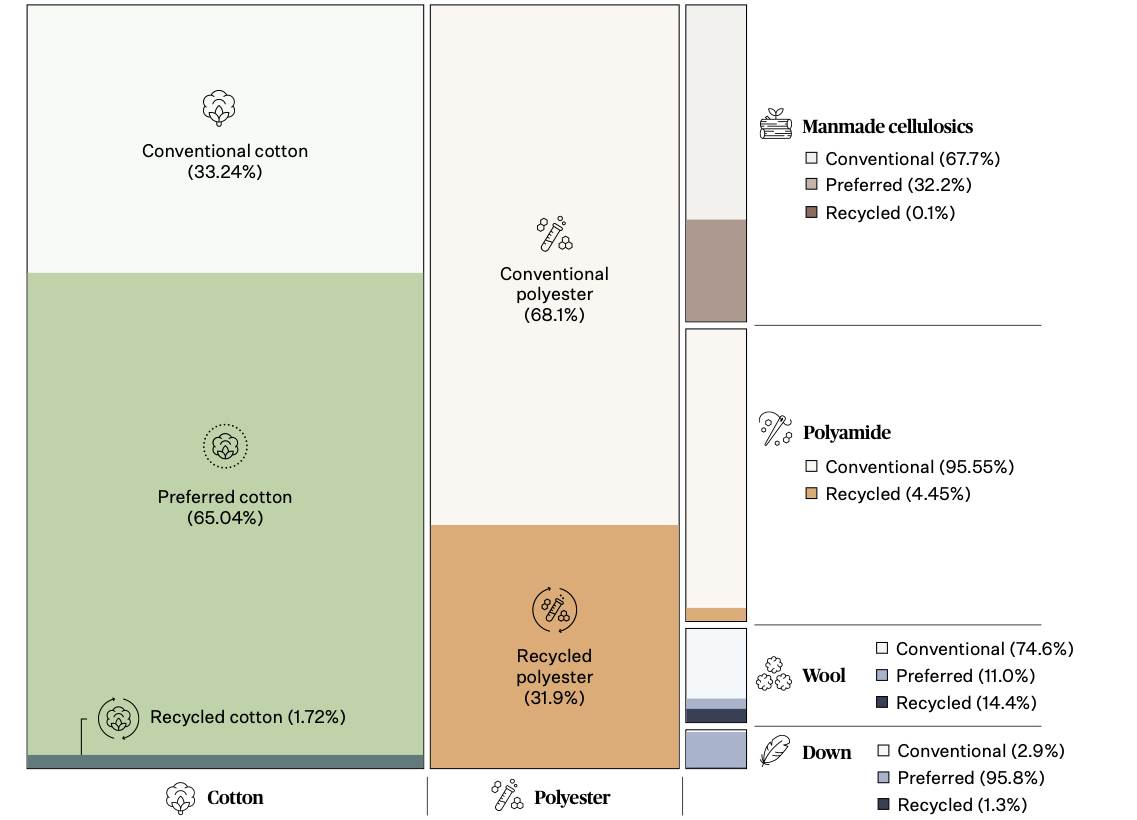Textile Exchange releases 2021 material change benchmark
28/06/2022

The benchmarking report covers fibre and materials sourcing in the course of 2021. It compiles data supplied by 292 brands and retailers, marking a sharp uptick from the previous edition which covered the contribution of 191 brands and retailers. Not all participating companies are Textile Exchange members and the cohort changes every year. This means that data from year to year may not be directly comparable, stated Textile Exchange. The organisation says it has 700+ active members.
The report tracks progress made in eight fibre categories, covering the main natural and synthetic raw materials along with down and leather. It found that ‘preferred’ cotton represented 65% of overall cotton used by participating brands and recycled polyester jumped to 32% of all polyester use, compared to 21% the year before.
Digging deeper into the data on cotton, the MCI benchmark for 2021 indicates that 61% of the cotton used by participating brands could be traced back to a country of origin. The Global Organic Textile Standard (GOTS) is the main organic cotton standard used and is up 11% over the previous two years. Textile Exchange’s Organic Content Standard (OCS) comes second and is also up, by 20%. The mass balance system applied by Better Cotton (BCI) remains nonetheless the main standard applied by 52% of participants.
The report found that recycled cotton sourcing remains low at around 1-2%, a number that has not changed over the past three years.
Looking forward, Rui Fontoura, Cotton Lead for Textile Exchange commented: “We aim to drive a shift to regenerative practices and systems, working with recognized preferred cotton initiatives, facilitating acceleration, and validating progress. We will also support the conversion to better practices, since it is paramount to grow the availability of preferred cotton to meet the needs of the current demand.”
Click here to download the report.
Image capture from report










